#drip irrigation systems
Explore tagged Tumblr posts
Text
The Essential Guide to Drip Irrigation Systems: Conserving Water and Growing Healthy Plants
Conserving Water and Growing Healthy Plants

In an age where every drop of water counts, drip irrigation systems offer an incredible solution to keeping plants healthy while conserving resources. Whether you're a home gardener or a large-scale grower, drip irrigation is a powerful tool for maximizing plant growth and minimizing water waste. But what makes this system so revolutionary?

How Drip Irrigation Works
A drip irrigation system is built with simple but effective components: tubing, emitters, and valves that release water slowly and steadily to the plant's root zone. The emitters are strategically placed to ensure that only the plants receive water, minimizing waste. Some systems also use timers and sensors, which add control and convenience, and plants can be watered even when you're away.
Key Benefits of a Drip Irrigation System
Choosing a drip irrigation system not only saves water, it transforms plant care and simplifies your gardening routine:

Water Conservation
Traditional sprinklers lose a lot of water through evaporation and runoff. Drip irrigation prevents this by delivering water directly to the soil level, using only the amount your plants actually need.
Healthier Plants
With consistent watering at the roots, plants are less likely to suffer from stress or disease. This method encourages stronger, more resilient growth as plants receive only the moisture needed without being overwatered.
Weed Control
By directing water only to your plants, drip irrigation makes it difficult for weeds to grow, keeping your garden cleaner and healthier.
Types of Drip Irrigation Systems
Choosing the right type of drip system depends on your setup:
Surface Drip Irrigation – Tubes are laid above the soil, ideal for vegetable gardens where the layout changes each season. Easy to install and adjust, it's ideal for beginner gardeners.
Subsurface drip irrigation: Tubes are buried beneath the soil, making them more permanent and effective in hot, windy climates where evaporation is high. This option is best suited for large fields or gardens with permanent plantings.
Setting up a drip irrigation system
Installing your own drip irrigation system is simpler than you think. Here's a quick guide:
Plan your layout: Map out your garden and decide where each emitter should go based on the location of the plants.
Install the tubes: Lay the tubes along the plants, placing them near their base.
Connect the emitters: Place small emitters near each plant to control the flow of water.
Connect to water: Connect your system to a water source such as a faucet or rain barrel.
Test: Run the system and adjust the emitters to ensure even water distribution.
With these steps, your drip system will be ready to keep your plants hydrated without daily intervention.
The Cost of Drip Irrigation Systems
While there is an upfront cost, the long-term savings in water and plant health are substantial. The initial cost varies depending on the complexity of the system, but it pays for itself quickly as water usage decreases and plant health improves.
Maintaining Your Drip Irrigation System
Maintenance on a drip irrigation system is minimal, but necessary. Regular checks prevent clogs and leaks, while seasonal adjustments help the system adapt to changing conditions. Cleaning filters and testing emitters each season ensures your system stays efficient.
Drip Irrigation vs. Traditional Irrigation
Unlike sprinklers or hand watering, which can lead to overwatering or evaporation, drip irrigation uses water much more efficiently. It's an environmentally friendly option that reduces overall water usage and improves plant health.
Drip Irrigation for Different Plants
A drip watering system can be customized for various types of plants:
Vegetables: Plants like tomatoes and cucumbers thrive with consistent moisture.
Flower Beds: Drip irrigation gently delivers water to delicate flowers, preventing overwatering.
Sustainable and Eco-Friendly Gardening
In drought-prone areas, drip irrigation is more than a convenience—it’s a necessity. This system supports sustainable gardening practices by conserving water and promoting healthy ecosystems. Adopting drip irrigation means contributing to a greener, more responsible way of growing.
By understanding and using a drip irrigation system, gardeners can achieve lush, healthy plants without wasting water, making it a win-win solution for the environment and your garden.
#Drip Irrigation Systems#Water Conservation in Gardening#Healthy Plant Growth with Drip Systems#Benefits of Drip Irrigation
0 notes
Text
A Guide to Selling Solenoid Valves- Aquagation and Netafim
#Irrigation #DripIrrigation #CropProduction #Horticulture #Floriculture #CEA #Hydroponics #Plants #Crops #Greenhouses #Farms #Agriculture #AG #IndoorFarms #GrowRooms #GrowOps #Farmers #Farming #LosAngeles #LA #CA
0 notes
Link
🌱💧 Transform your garden into a thriving oasis without wasting a drop! Discover our easy-to-follow guide on installing a drip irrigation system—your step-by-step roadmap to ensuring your plants receive just the right amount of water. Perfect for green thumbs looking to embrace sustainability and conservation. Dive in to keep your garden lush and healthy all year round! 💦🌿 #DripIrrigationSystems #WaterConservation #GardeningTips
0 notes
Text
Why Golf Course Irrigation Is So Important
Irrigation Systems for Golf Courses Create Lasting Beauty
Golf courses are places of serene beauty, a field of uninterrupted green space enjoyed by both golfers and passersby. Maintaining the lush turf is one reason to pay attention to the irrigation system. However, other factors include the impact of turf quality, terrain, and water features on each shot the golfer takes. These factors are as significant on a course built for recreation as one designed for championship-level training for 18 holes.
The pumping stations, weather stations, water quality, and water distribution all play a part, especially if the golf course manager or owner operates on a limited budget. Vanden Bussche Irrigation has knowledgeable Irrigation and Water Management (IWM) pros to offer you insight. We are happy to help you maintain an efficient golf course irrigation system. https://vandenbussche.com/article/why-golf-course-irrigation-is-so-important
#golf course irrigation system#irrigation equipment#irrigation products#delhi irrigation supply#drip irrigation systems#farm irrigation equipment supply#irrigation systems#irrigation system#drip irrigation system#golf course maintenance#Irrigation Systems for Golf Courses
0 notes
Text
imagine your blorbo frothing and spitting blood and it's just bc he really went at it w the water pic
#i don't know why archer/shran is the pairing that came to mind for this#archer tries out the new dental irrigation system installed for his space gingivitus#and shran walks in on him with blood dripping from his chin#and suddenly hey wanna have another duel just for funsies#wanna fuck each other up? [twirls antennae]
3 notes
·
View notes
Text
The Best Irrigation Systems for Lawns: A Comprehensive Guide
Introduction
Irrigation is a critical element in maintaining a lush, healthy lawn. A well-watered lawn can withstand droughts, grow thick and green, and resist pests and diseases. The right irrigation system for your lawn depends on factors like your lawn size, water pressure, climate, and budget. In this guide, we will explore the best irrigation systems available to help you choose the perfect one for your needs.

1. Sprinkler Systems
Sprinkler systems are the most common irrigation solutions for lawns, offering broad coverage and efficient water distribution.
In-Ground Sprinkler Systems: These systems are designed for permanent installation, with sprinkler heads placed in the ground. They can be customized to cover different areas of the lawn with adjustable spray patterns. Some advantages include even water distribution, low maintenance, and long-lasting performance.
Best For: Large lawns or lawns with irregular shapes.
Advantages: Efficient, customizable, and can be set on automatic timers.
Disadvantages: Higher installation cost and maintenance.
Pop-Up Sprinklers: These are a variation of in-ground sprinklers, designed to rise above the ground when the system is activated and retract when not in use. This helps prevent damage from mowing and provides effective coverage.
Best For: Residential lawns with medium to large sizes.
Advantages: Low maintenance, durable, and effective for various lawn sizes.
Disadvantages: Initial installation cost may be high.
2. Drip Irrigation Systems
Drip irrigation systems are designed to deliver water directly to the root zone of plants. These systems are ideal for watering flower beds, garden areas, and lawns with specific watering needs.
How It Works: A network of tubing delivers water through small emitters or drippers directly to the soil, ensuring precise and efficient water usage.
Best For: Smaller lawns or areas with drought-resistant grass and plants.
Advantages: Water conservation, reduces runoff, and promotes deep root growth.
Disadvantages: Not ideal for large lawns or areas with heavy grass coverage.
3. Soaker Hoses
Soaker hoses are a more affordable option for watering your lawn. These hoses are designed to slowly release water along their length, making them ideal for evenly watering flower beds or garden areas.
How It Works: Soaker hoses are porous, allowing water to seep through the entire length of the hose as it’s laid on the ground. They are particularly useful for vegetable gardens or flower beds where consistent moisture is needed.
Best For: Small lawns or garden beds.
Advantages: Affordable, easy to install, and water-efficient.
Disadvantages: Less effective for larger lawns or areas with poor drainage.
4. Smart Irrigation Systems
In recent years, smart irrigation systems have gained popularity due to their advanced technology and ability to save water while keeping lawns healthy. These systems connect to your smartphone or tablet, allowing you to control watering schedules remotely.
How It Works: Smart irrigation systems use weather data and sensors to adjust watering times based on current weather conditions. They can be programmed to run during off-peak hours, reducing water waste.
Best For: Homeowners with large lawns who want to optimize water usage.
Advantages: Water-efficient, remote control, customizable schedules.
Disadvantages: Higher upfront costs and some technical learning curve.
5. Rain Barrels
Rain barrels are a sustainable way to water your lawn by collecting rainwater for future use. They can be connected to downspouts to capture runoff water from roofs, which can then be used to irrigate your garden or lawn.
How It Works: A rain barrel is connected to the downspout of your home’s gutters, capturing rainwater and storing it for later use. This system is usually gravity-fed or can be outfitted with a pump for added pressure.
Best For: Eco-conscious homeowners looking for a sustainable watering option.
Advantages: Eco-friendly, cost-effective, reduces water bills.
Disadvantages: Limited water storage and reliant on rainfall.
6. Choosing the Right Irrigation System
When selecting the best irrigation system for your lawn, consider the following factors:
Lawn Size: Larger lawns typically benefit from in-ground sprinkler systems or pop-up sprinklers, while smaller lawns may do well with soaker hoses or drip irrigation.
Water Efficiency: If water conservation is a priority, drip irrigation and soaker hoses are more efficient compared to traditional sprinklers, as they deliver water directly to the roots.
Budget: Drip irrigation systems and soaker hoses are more affordable, while in-ground sprinkler systems and smart irrigation systems have higher upfront costs but offer more convenience and efficiency.
Climate: In dry areas, smart irrigation systems and drip irrigation can help reduce water waste and keep your lawn healthy with less frequent watering.
7. Hiring a Lawn Care Service Near Me for Irrigation Solutions
If you’re unsure which irrigation system is best for your lawn, consider consulting a lawn care service near me. Professional landscapers can assess your lawn’s size, soil type, and watering needs to recommend the most efficient system for your situation. They can also help with installation and maintenance, ensuring your lawn stays well-watered year-round.
Conclusion
Choosing the best irrigation system for your lawn depends on various factors such as lawn size, water efficiency, and budget. Whether you opt for an in-ground sprinkler system, drip irrigation, or a more sustainable solution like rain barrels, each system offers unique advantages. For personalized recommendations and professional installation, consider reaching out to a lawn care service near me.
0 notes
Text
#Irrigation Systems Toronto#Drip Irrigation Toronto#Irrigation System Toronto#Lawn Sprinkler Systems Toronto#Lawn Sprinklers Toronto#Sprinkler Repair Toronto#Sprinkler System Toronto#Toronto Sprinkler Companies#Toronto Lawn Sprinklers#Irrigation System Forest Hill#Sprinkler Companies Toronto#Irrigation System North York#Irrigation System Leaside#Sprinkler System Installer#Irrigation System Rosedale#EZ Lawn Sprinklers
0 notes
Text
Gravel Filters, Media Filters, Manufacturer, Supplier, Sangli, India
#Filter System#Filter Systems#Screen Filter#Screen Filters#Metal Disc Filter#Metal Disc Filters#Gravel Filter#Gravel Filters#Media Filter#Media Filters#Fertilizer Tank#Fertilizer Tanks#Hydrocyclone Filter#Hydrocyclone Filters#Drip Irrigation Filter#Drip Irrigation Filters#Micro Irrigation Filter#Micro Irrigation Filters#Allied Agro Equipment#Allied Agro Equipments#Drip Filter Spare#Drip Filter Spares#Quartz Sand#Quartz Sands#Plastic Screen Filter#Plastic Screen Filters#Micro Irrigation Filter System#Micro Irrigation Filter Systems#Metal Screen Filter#Metal Screen Filters
0 notes
Text
Drip Irrigation System: A Game-Changer for Agriculture in India
Introduction Agriculture is the backbone of India’s economy, employing millions and contributing significantly to the nation's GDP. However, water scarcity remains a major issue in many agricultural regions. To address this challenge and improve crop yields, drip irrigation systems have become a popular solution. These systems offer a water-efficient and sustainable method for irrigating crops, helping farmers conserve resources while maximizing productivity. In this article, we will explore the importance of drip irrigation systems in India and how manufacturers are revolutionizing the farming industry.
What is Drip Irrigation?
Drip irrigation is a highly efficient irrigation method where water is delivered directly to the roots of plants in small amounts through a network of pipes, emitters, and tubes. Unlike traditional irrigation systems that flood fields with water, drip irrigation ensures that the water is targeted at the root zone, minimizing wastage and promoting healthier crop growth. This method is particularly effective in areas with limited water resources, making it ideal for many regions in India.
Why Drip Irrigation is Essential for Indian Farmers
India faces a number of agricultural challenges, from water scarcity to inefficient irrigation techniques. Drip irrigation offers several key benefits, making it an essential tool for farmers:
Water Conservation: In India, where water scarcity is a growing concern, drip irrigation can reduce water usage by up to 50%. By delivering water directly to the plant’s roots, it minimizes water loss through evaporation and runoff.
Increased Crop Yields: With consistent and precise watering, crops receive the optimal amount of water, leading to healthier plants and better yields. This method also reduces the risk of crop diseases caused by overwatering or uneven watering.
Cost Savings: While the initial installation of a drip irrigation system may require an investment, the long-term savings in water and energy costs can be substantial. The reduced need for labor and fertilizers further lowers the operational costs.
Sustainability: Drip irrigation promotes sustainable farming practices by reducing water consumption and minimizing the need for chemical fertilizers. This leads to a healthier environment and better soil health in the long term.
Versatility: Drip irrigation systems can be used for a wide range of crops, including vegetables, fruits, spices, and even orchards. Whether on small family farms or large commercial operations, drip irrigation can be customized to suit different farming needs.
The Role of Drip Irrigation System Manufacturers in India
As the demand for water-efficient irrigation solutions grows, the role of drip irrigation system manufacturers in India has become more important. These manufacturers provide high-quality, cost-effective irrigation solutions tailored to the specific needs of Indian farmers. Their contributions include:
Innovating New Technologies: Drip irrigation system manufacturers continuously innovate to improve the efficiency, durability, and affordability of their products. New technologies, such as smart irrigation systems that monitor soil moisture levels, are making it easier for farmers to optimize water use.
Customization and Flexibility: Every farm is unique, with varying soil types, crop requirements, and water availability. Manufacturers offer customized solutions that cater to these diverse needs, ensuring that the system is optimized for the specific conditions of each farm.
Quality Assurance: To meet the challenges of the Indian climate, manufacturers focus on providing drip irrigation systems that are durable, reliable, and able to withstand harsh weather conditions. This ensures a longer lifespan for the system and better returns on investment for farmers.
Training and Support: Proper installation and maintenance are critical for the success of drip irrigation systems. Manufacturers often provide training and support to farmers, helping them understand how to use the system effectively and troubleshoot any issues that may arise.
Benefits of Drip Irrigation for Indian Agriculture
The benefits of drip irrigation systems extend far beyond water conservation. Here are some additional advantages that contribute to their popularity among Indian farmers:
Improved Soil Health: Drip irrigation reduces the risk of soil erosion, salinization, and waterlogging, common problems associated with traditional irrigation methods. By delivering water slowly and directly to the root zone, it helps maintain the soil's structure and improves its fertility.
Reduced Weed Growth: Since water is applied only to the root zone, the surrounding soil remains dry, which reduces the growth of weeds. This minimizes the need for herbicides and manual labor, resulting in a more sustainable farming practice.
Precision and Control: Drip irrigation allows farmers to have precise control over the amount and timing of water delivery. This level of control enables them to tailor the irrigation schedule to the specific needs of each crop, ensuring optimal growth conditions and preventing over or under-watering.
Labor Efficiency: Drip irrigation systems can be automated, reducing the need for manual labor. This is especially beneficial in regions where labor shortages are a concern. Automation also ensures that the irrigation system operates at consistent intervals, reducing human error.
Challenges and Considerations
While drip irrigation offers numerous advantages, it is essential to consider certain challenges before adopting the system:
Initial Investment: The upfront cost of installing a drip irrigation system can be high, which might be a barrier for small-scale farmers. However, many manufacturers offer financing options and government subsidies to help overcome this hurdle.
Maintenance: Regular maintenance is required to keep the system functioning properly. This includes cleaning the emitters and checking for clogs. However, the long-term benefits usually outweigh the maintenance costs.
Technical Knowledge: Proper installation and usage require technical knowledge. It is essential for farmers to receive adequate training to maximize the system’s effectiveness.
Conclusion
Drip irrigation is transforming Indian agriculture by addressing critical challenges like water scarcity, soil health, and crop yield optimization. As drip irrigation system manufacturers in India continue to innovate and provide tailored solutions, farmers across the country are adopting this method to improve their productivity and sustainability.
By implementing drip irrigation, farmers can not only conserve precious water resources but also enhance the quality of their crops, ultimately ensuring the future of agriculture in India. Whether you're a small-scale farmer or a large agricultural enterprise, investing in a drip irrigation system is a smart choice for sustainable and efficient farming.
#Drip Irrigation System#Drip Irrigation India#Agricultural Irrigation Solutions#Water-Efficient Irrigation
0 notes
Text
Complete Guide on Drip Irrigation System | Netafim India Blog
Discover everything you need to know about drip irrigation systems in our complete guide. A valuable insights to optimize your agriculture practices with the efficiency of our Drip Irrigation System. Unlock the ultimate guide on Drip Irrigation System and its installation now!
0 notes
Text
Al Falaj Gardens | Gutter hydroponic systems Falajgarden is the number one solution provider in the UAE for Gardening. We are the Irrigation item suppliers in UAE and we deal with every solution regarding Garden plant pots, Garden sprayers, Irrigation fittings, and Fertilizers for plants, when it comes to gardening, there is no one like Falajgarden. https://falajgarden.com/product-category/hydroponic-items/gutter-system/
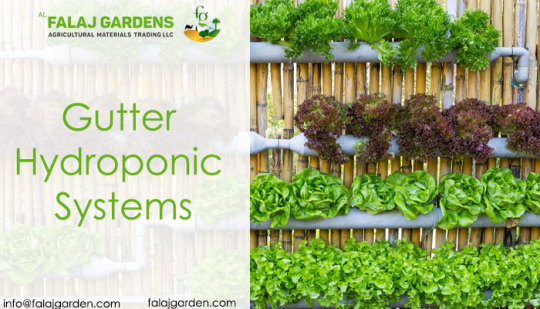
#Garden sprayers#Irrigation fittings#Garden Pots Dubai#Indoor outdoor garden plants#Drip irrigation accessories online#Vegetable Seed suppliers in UAE#Vertical garden items UAE#Agricultural grow lights Dubai#Hydroponic system supplier in UAE#Hydroponics companies in UAE#Irrigation accessories company
0 notes
Text

Introducing the perfect solution for your irrigation system - Drip Tape Fittings! With DFShou, you can ensure efficient water distribution, saving both time and resources.
Say goodbye to wastage and hello to a greener future! Enhance your irrigation system today and witness the difference.
0 notes
Text
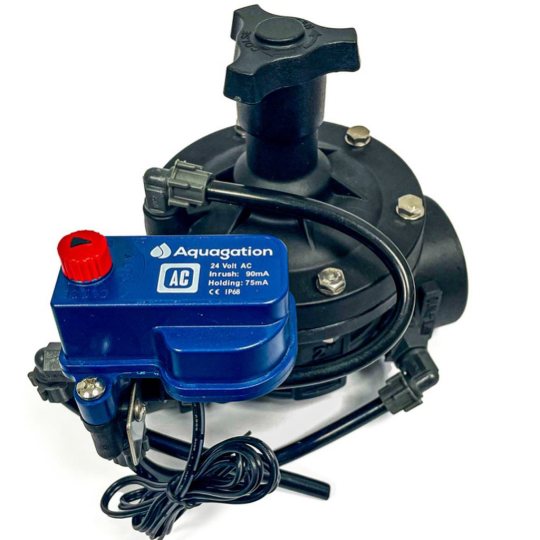

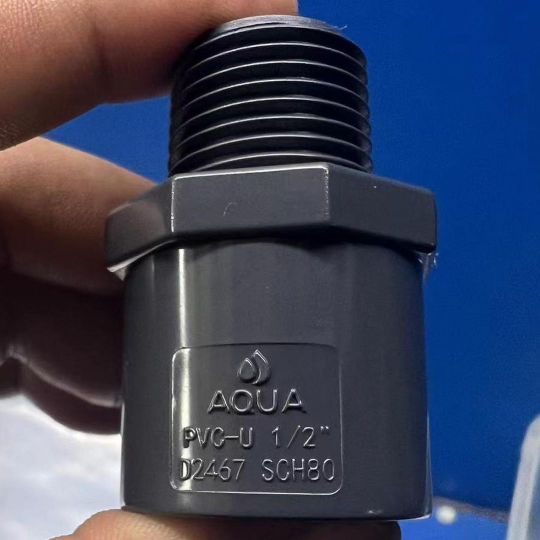
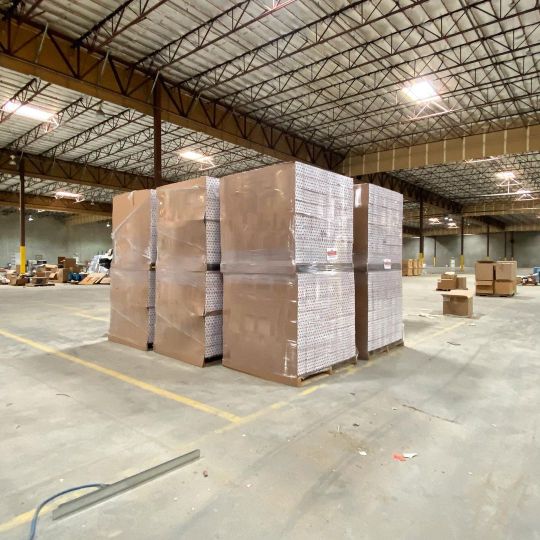

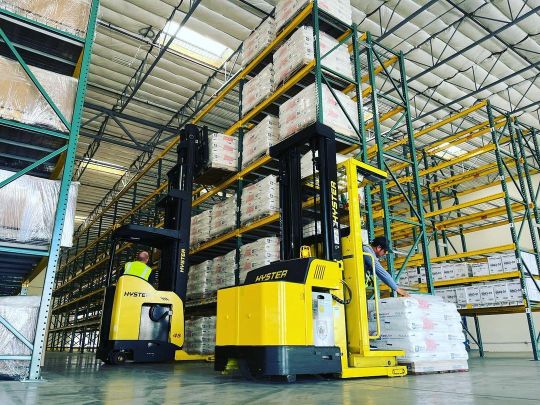
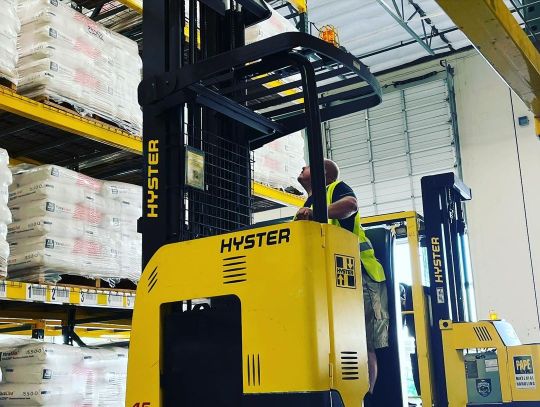

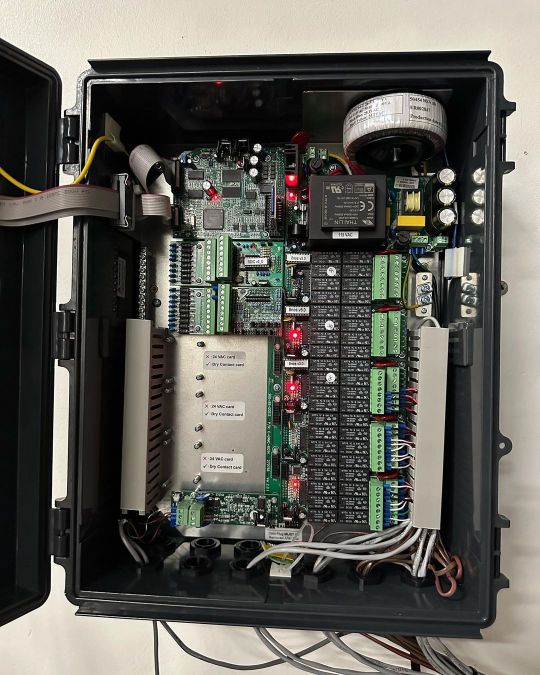
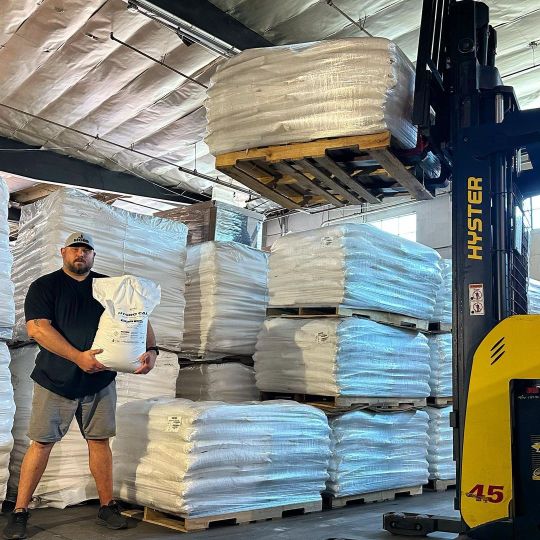




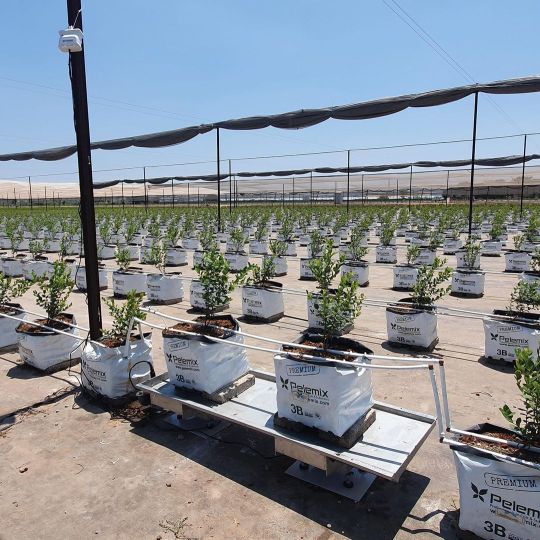

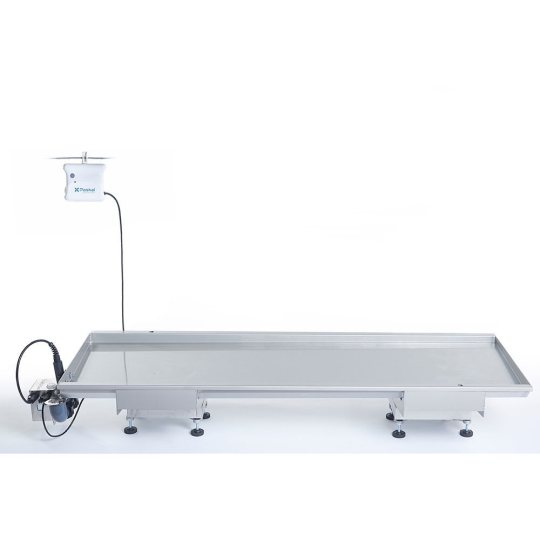
#grow supplies#grow ops#drip irrigation#irrigation#farm irrigation#hydroponic systems#indoor farms#greenhouses#farming
0 notes
Text
Winterizing Your Farm Irrigation System - A Handy Checklist
The Purpose of Winterizing Farm Irrigation Systems
You may be done with harvesting the crops this season, but it’s not time to rest just yet. Left unprotected, your irrigation equipment will remain exposed to the risk of damage by the ice that forms within it. If your system is not blown out properly, you might end up with cracked or burst pipes, malfunctioning irrigation equipment and costly repair bills. As the temperature begins to drop, it’s time to protect your commercial irrigation system. This one final seasonal project will ensure that your equipment will be ready to serve you again in the spring.
Whether you have a farm, fruit orchard, or vineyard, the same irrigation winterizing principles apply; you must remove excess water to prevent damage caused by ice. The blow-out method forces high-pressure air through all the pipes and equipment to remove remaining water. While similar to the steps required for winterizing a commercial or landscape irrigation system [insert link to previous blog here], there are additional components to an agricultural irrigation system that require attention. Blowing out this equipment requires a large-capacity air compressor. We recommend a 25-50 HP diesel compressor with 185 CFM and 175 max PSI.
Below is a checklist of agricultural irrigation equipment that will require winterizing maintenance.
#irrigation system#drip irrigation system#delhi irrigation supply#irrigation products#drip irrigation systems#golf course irrigation system#irrigation equipment#farm irrigation equipment supply
1 note
·
View note
Text
Just because you use any type of lawn irrigation doesn't mean you'll be happy with the results. It may depend on how the system works, how much grass is covered, or a variety of other factors, but no matter what you do with your yard, problems can arise. If this sounds familiar, now is the time to think about how to get the most out of your lawn sprinkler system.
#lawn irrigation#water treatment#water filtration#water purification#irrigation systems#irrigation system#drip irrigation system#LAWN SPRINKLER SYSTEM
0 notes
Text
https://writeonwall.com/what-services-an-irrigation-maintenance-company-should-offer/
One of the simplest ways to make sure your irrigation system runs as effectively as potential is by hiring skilled sprinkler repair services Near Me.
#commercial landscaping#best irrigation specialist#commercial landscaping Jacksonville#drip irrigation system#irrigation company#irrigation repair
1 note
·
View note